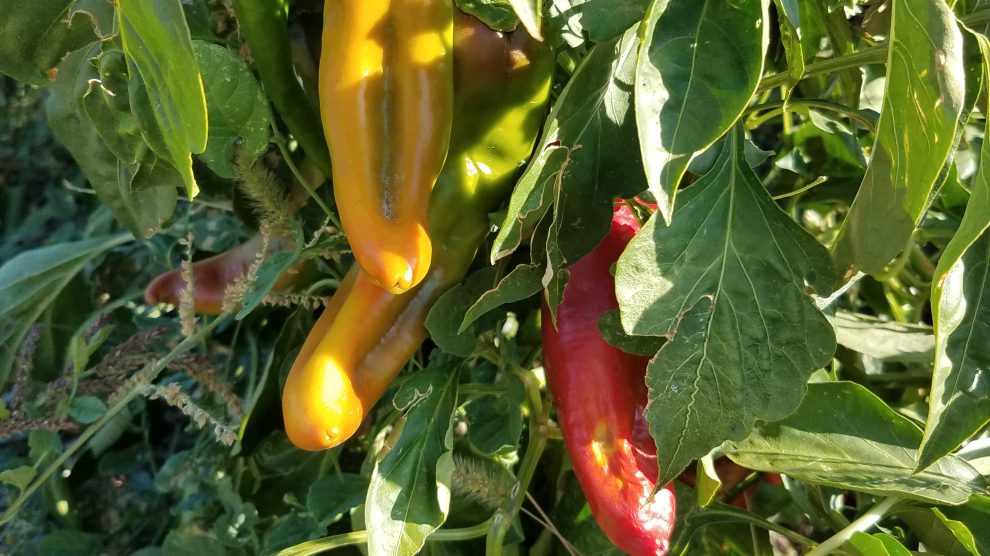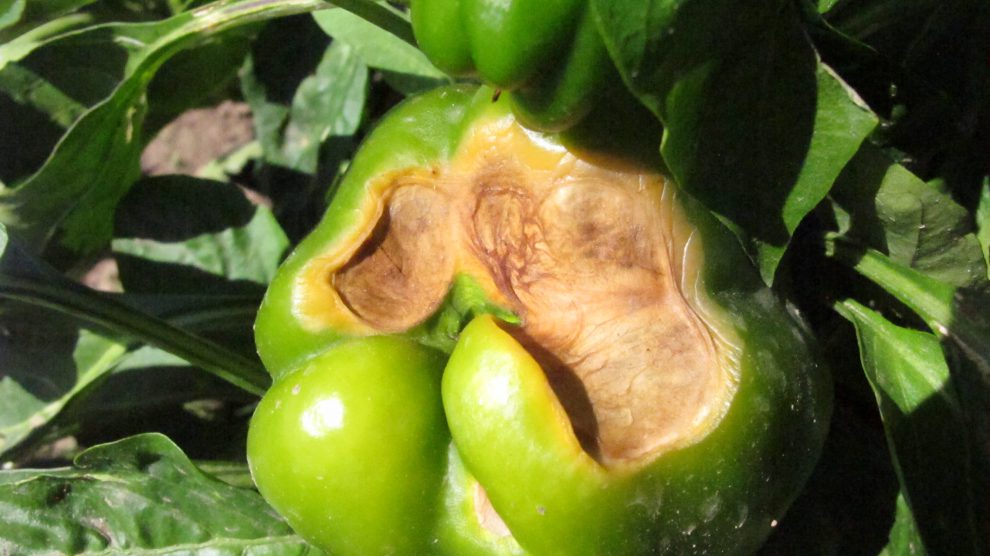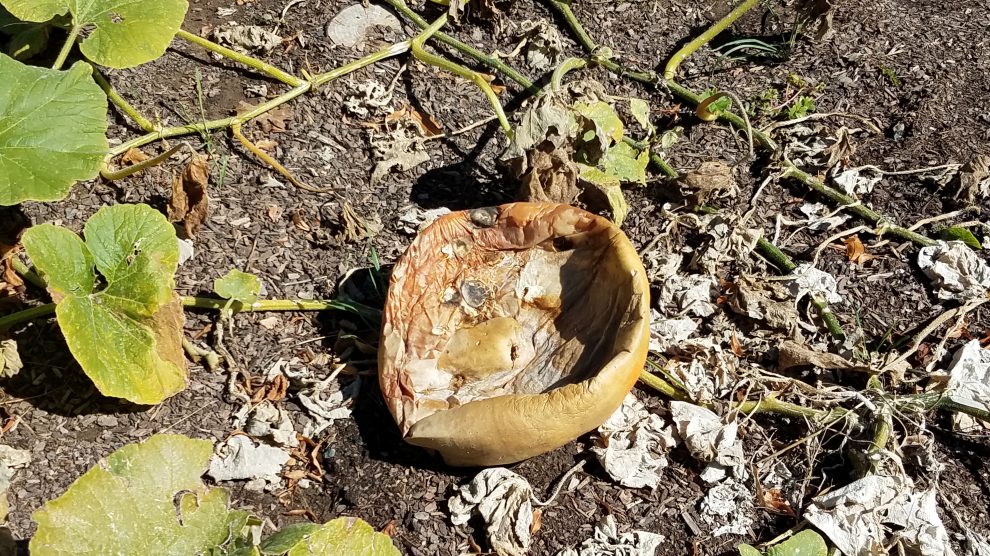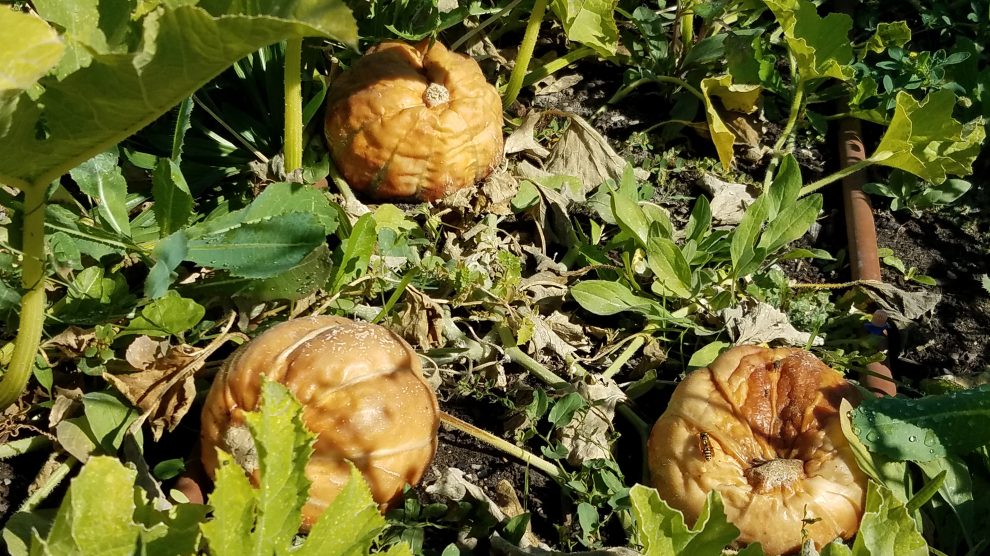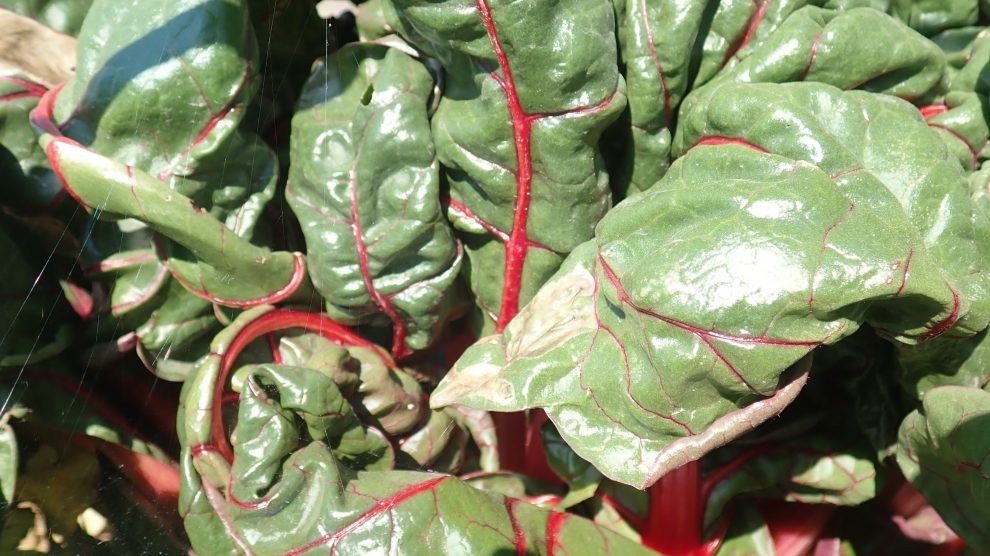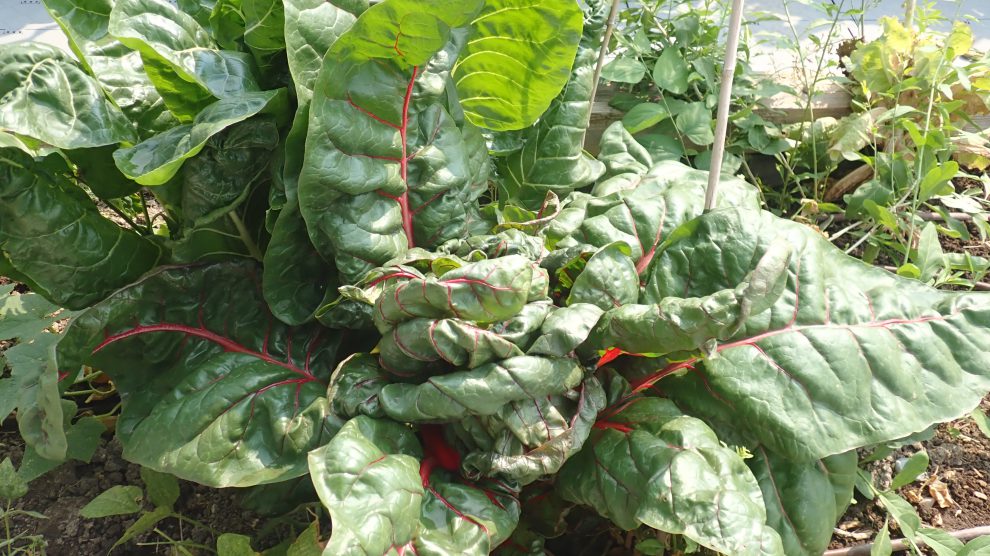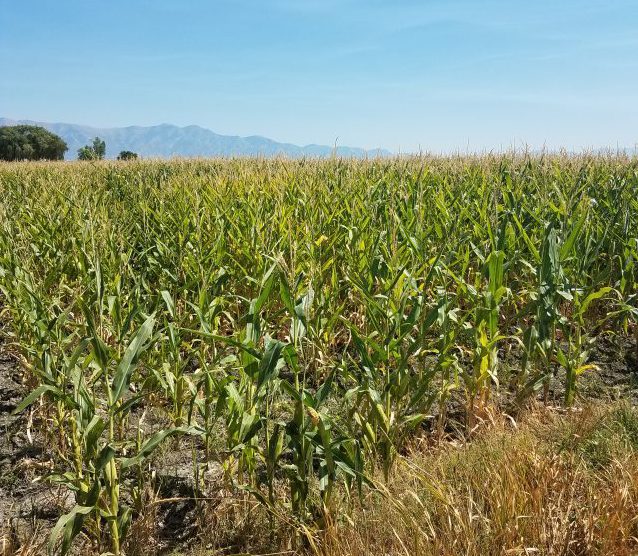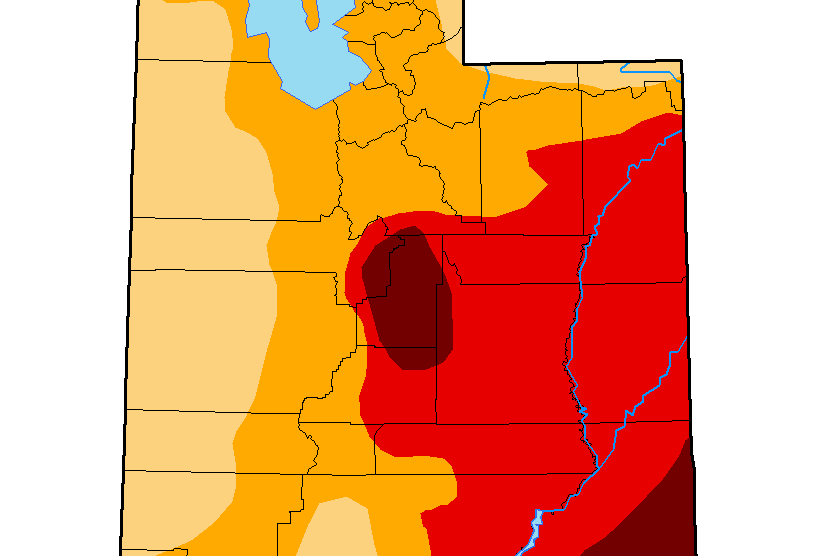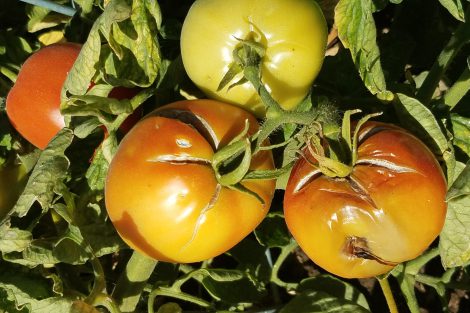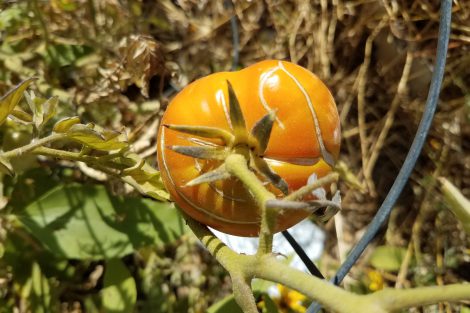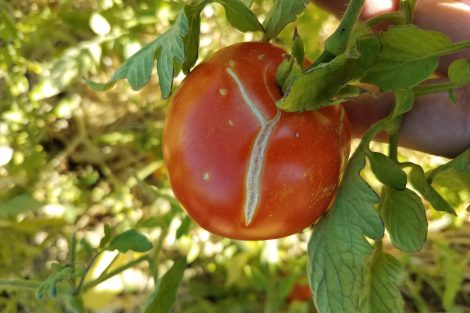In this issue, find out what might have gone wrong with your vegetable harvest this season.
Problems include:
- Sunscald on Peppers
- Rotting Pumpkins
- Wormy Sweetcorn
- Tomatoes with Blossom End Rot
- Corn Smut
- Tomatoes with Spotted Wilt Virus
- Tomatoes with Early Blight
- Split/Cracked Tomatoes
- Chard Deformation
- Drought Across Utah
Pepper Sunscald
Symptoms: Discolored “sunburned” patches on the fruits.
Cause: Intense direct sunlight on the fruits of the plants.
Future Management:
- Ensure plants are receiving adequate nutrients from soil. Healthy plants will have more foliage to shade their fruit.
- In smaller sites, consider using a shade cloth to shield plants from direct sunlight.
Rotten Pumpkin Patch
Symptoms: Pumpkins still attached to vine become discolored and begin rotting.
Cause: This rotting of the pumpkins could potentially be Gummy Stem Blight (Black Rot) which is caused by the fungus Didymella bryoniae.
Future Management:
- Remove plant debris at the end of the season.
- Consider implementing crop rotation the following season.
Wormy Sweet Corn
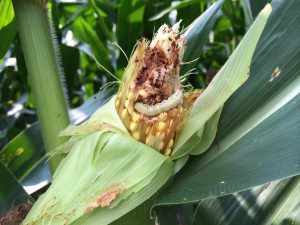
Symptoms: Larvae of corn earworm will tunnel in toward the corn kernels from the top of the ear, leaving behind frass. The larvae will also feed on silks which will decrease pollination.
Cause: The larvae of the Helicoverpa zea moth. In northern Utah, corn earworm has 3 generations per year, and up to 4 or more in southern Utah.
Future Management:
- Plant resistant corn varieties.
- Consider tilling garden or field at the end of the season or in the spring before planting.
- Plant corn early and harvest before peak of moths (Jul 20 – Aug 5)
Corn Smut
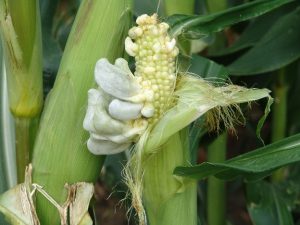
Symptoms: Grey-white galls (which result from swollen plant tissue) can form on the shoots, leaves, kernels, and tassels of the corn.
Cause: The Ustilago maydis fungus overwinters as spores in the soil or corn residue. The following season, wind blows these spores onto the corn tissue in late spring. Mature galls can erupt and release secondary spores.
Future Management:
- Corn smut is rare in Utah, but incidents have been recorded in Salt Lake County.
- Manually remove galls early on as they appear to prevent spread.
- Rotate corn to new locations in upcoming seasons.
- Remove residue at the end of season.
Tomato Spotted Wilt Virus
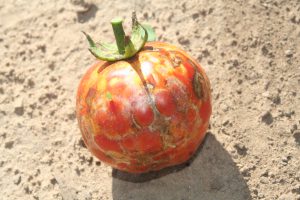
Symptoms: In tomatoes, TSWV will cause necrotic spots on the leaves and/or the necrotic rings on mature fruit.
Cause: The Tospovirus which causes TSWV is vectored by thrips and can overwinter in the thrips or winter weed species. Once a plant is infected, there is no cure.
Future Management:
- TWSV occurs occasionally in Utah tomato production.
- Monitor the thrips population throughout the season.
- Plant resistant varieties such as Tribute or Tribeca.
- Remove all plant residue at the end of the season.
- Consider implementing crop rotation the following season.
Early Blight (Tomatoes)
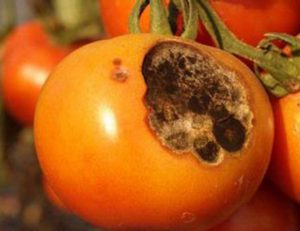
Symptoms: The foliage will develop brown ring-like lesions on older leaves closer to the ground.
Cause: The fungus Alternaria solani spores will overwinter in plant debris.
Future Management:
- Early blight was found in Salt Lake County this season, however the fruit is rarely effected in Utah.
- Plant resistant varieties such as Iron Lady, Mountain Magic, Jasper, Juliet, and Verona.
- Remove plant debris from site at the end of the season.
Deformed Chard
Symptoms: Foliage can appear to be shriveled
Cause: Both cabbage aphids and green peach aphids will target chard and other cruciferous vegetables.
Chard can still be edible if thoroughly washed.
Future Management:
- Avoid excess nitrogen in the soil.
- Keep planting area weed free.
Drought
The entire state of Utah has experienced abnormal dryness this year. According to the National Integrated Drought Information System (NIDIS) our region is experiencing drought intensities from Moderate (western Utah) to Exceptional (central and southeast Utah). These conditions can have a significant impact on our garden and field crop yields. As growers, we should know how to identify drought stress our vegetable crops and consider the marketability and other options moving forward. Some drought related conditions you might have noted this year include split/cracked tomatoes and tomatoes with blossom end rot.
Split/Cracked Tomatoes
Symptoms: Visible cracking or zippering on the fruit of tomato plants. Despite being unaesthetic, cracked tomatoes increase the risk of bacteria and fungi being introduced into the fruit.
Cause: Tomatoes can split/crack when they experience a drought or suddenly receive a large amount of water that causes the fruit to expand then split. These fluctuations are difficult for the plant to handle.
Future Management:
- Water tomatoes regularly and evenly throughout the growing season.
- Pick tomatoes when they are almost ripe.
- Make sure plants have adequate soil drainage.
Blossom End Rot in Tomatoes
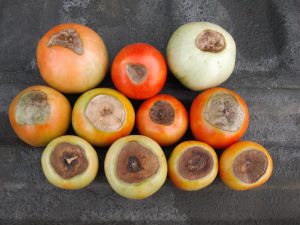
Symptoms: On the blossom end of the fruit, the inner flesh will turn a black/brown leather texture. These symptoms can occur at any stage of the fruit development, but are usually seen when the fruit is one half the full size.
Cause: Blossom end rot is caused by a calcium deficiency.
Future Management:
- Make sure the soil is evenly moist throughout the growing season.
- Consider applying a calcium-based fertilizer the next season.

